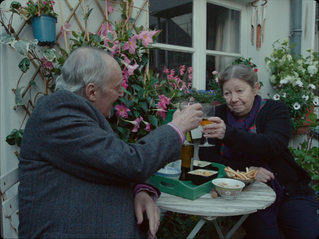Synecdoche, New Love: Modern Couples Exhibition Review
- Isobel Wise
- Oct 12, 2018
- 3 min read
Updated: Aug 16, 2020
‘Modern Couples presents a different way of looking at Modernism in art, as seen through the artist ‘couple’, an elastic term encompassing all manner of intimate relationships that the artists themselves grappled with, expanded, embraced or refuted.’ – Exhibition Guide
Modern Couples: Art, Intimacy and the Avant-garde is the newest exhibition at the Barbican Centre. Organised in collaboration with the Centre Pompidou-Metz, the exhibition draws on a wide range of original paintings, handwritten letters, sculptures, artist manifestos, and furniture. The idea of the solitary artistic genius is done away with, giving attention to the muses, rivals, lovers and companions whose consideration seems long overdue.
Including the likes of Vanessa Bell & Roger Fry, Camille Claudel & Auguste Rodin, Claude Cahun & Marcel Moore, Eileen Gray & Jean Badovici, and over forty more- the exhibit considers more than just romantic or sexual couplings but platonic, familial, professional and competitive ones. It also steers away from a heteronormative model, including couples such as Lili Elbe & Gerda Wegener.

D. Tanning and M. Ernst with his sculpture ‘Capricorn’, 1947, @John Kasnetsis
Sprawling across two levels and filling twenty-three rooms, the exhibition is comprehensive to say the least. Each couple is given a section of wall on which their names, artistic output and biography of relationship are printed. Oddly, the ‘birth’ and ‘death’ dates of the relationship are also supplied, each one coming together on one wall to produce a timeline: ‘from the liaison to the life-long’. The works of art are exclusively framed within the rhetoric of the ‘modern couple’. Little evidence and reference is given to work beyond the timeline of the relationship, as if that artistic output is deemed unworthy of mention.
But this is not to say the exhibition does not have its successes. For example the sheer variety of material is extremely impressive- a testament to the effort and rigour of the curators involved. From Marcel Duchamp’s Erotic Objects (1950-1) which are based on the moulds of female genitalia, to the harrowing handwritten communications between Camille Claudel & Auguste Rodin: “please don’t be unfaithful to me anymore”. Upstairs the exhibition also features examples of Aino & Alvar Aalto furniture and a selection of designs from the Bloomsbury group.

Virginia Woolf and Vita Sackville-West, 1933. Houghton Library, Harvard University
‘Liberated, Radical, Obsessional!’ is the tagline emblazoned across the promotional tote-bags and posters, but throughout the exhibition I asked myself: where? Where is this obsession that inspired, enabled and empowered the artists behind these wonderful works of art? The fervour that supposedly fuelled these works of passion are displayed in a format that quickly becomes repetitive and mechanical. It is like one has stepped into the physical manifestation of each artists’ dictionary entry and we are unable to delve further beyond their opening sentences. Unfortunately, despite its good intentions of representing the overshadowed partner, the exhibition does little to advocate their genius and brilliance. If one compares Modern Couples to the Basquiat: Boom for Real exhibit which ran last year, the former seems entirely soulless. Whilst Boom for Real celebrated Basquiat as a multifaceted and energetic creative, Modern Couples is a straightjacket to those it includes. It does little to relieve the more unknown partners of their obscurity as their work is only presented as the output of a ‘couple’.
Whilst I admire the variety of material, Modern Couples flatlines in the struggle between quantity and quality. The art is used, not only to represent the whole relationship, but each artist’s entire oeuvre.

A. Rodchenko and V. Stepanova in the workshop. (in front of Kino-phot magazine covers), 1923 Courtesy Rodchenko and Stepanova Archives, Moscow
Modern Couples: Art, Intimacy and the Avant-garde can be seen at the Barbican Centre, EC2Y 8DS, until 27 Jan 2019.








Comments